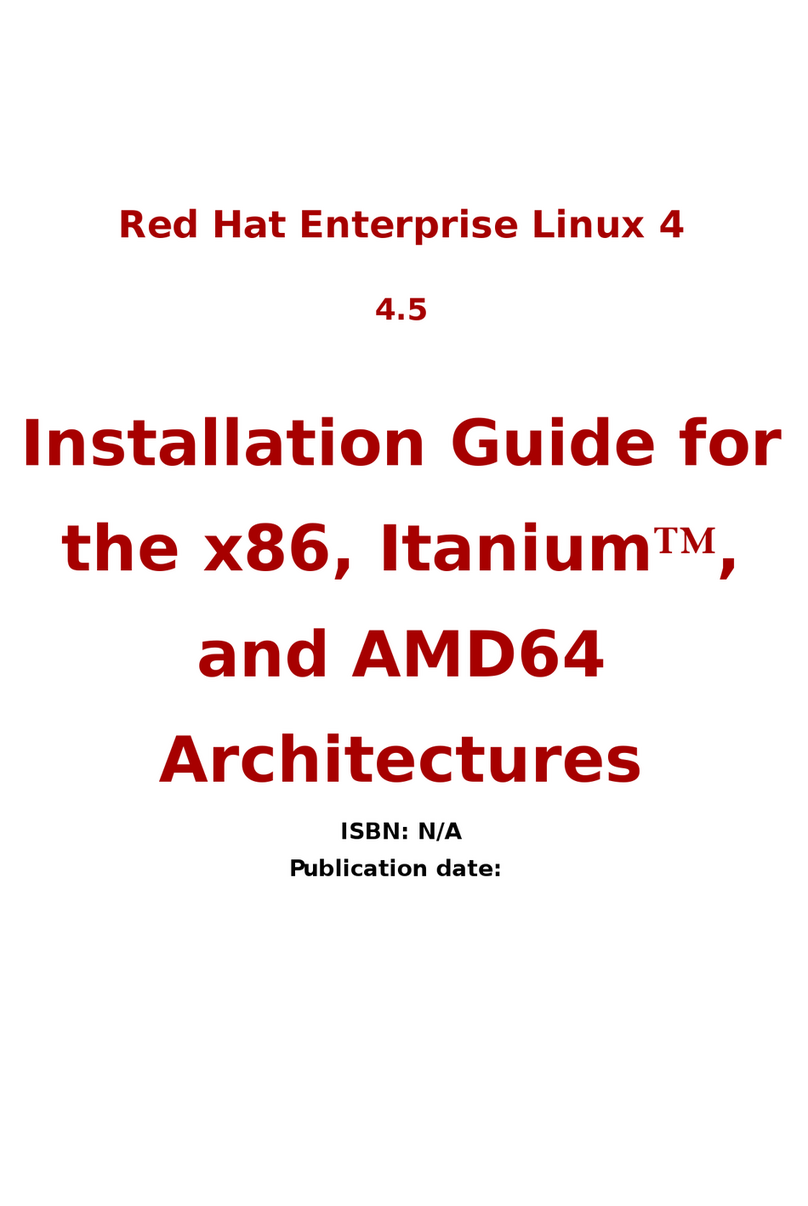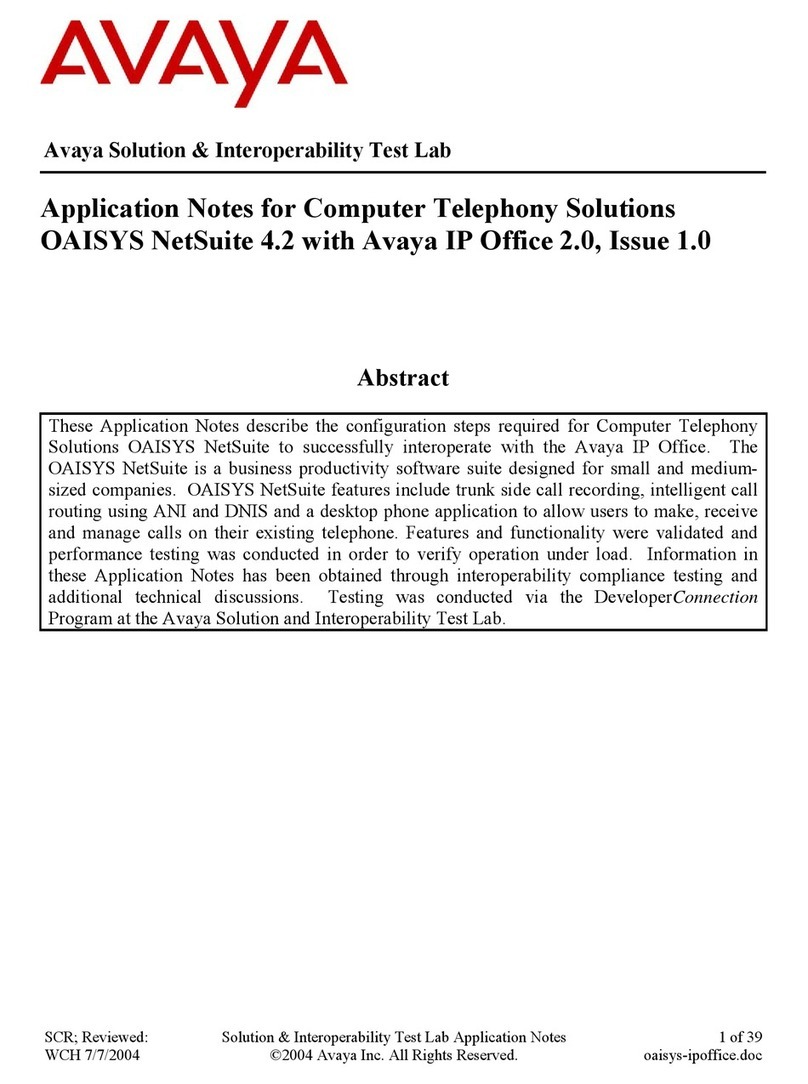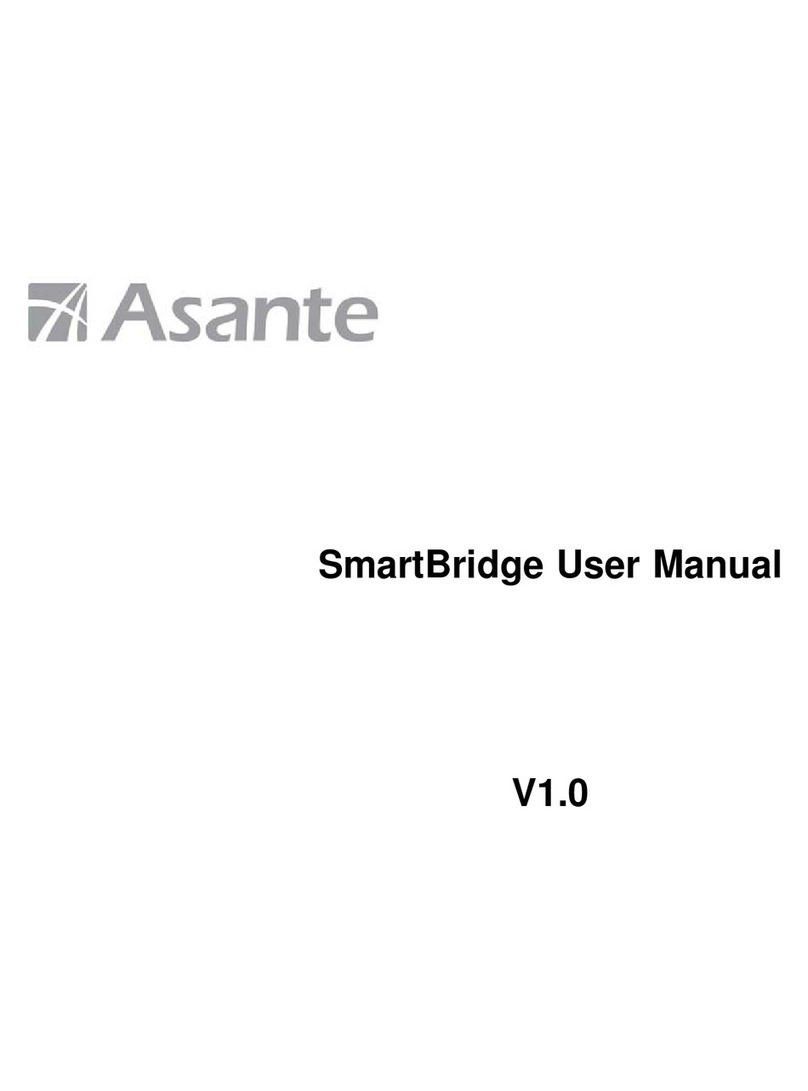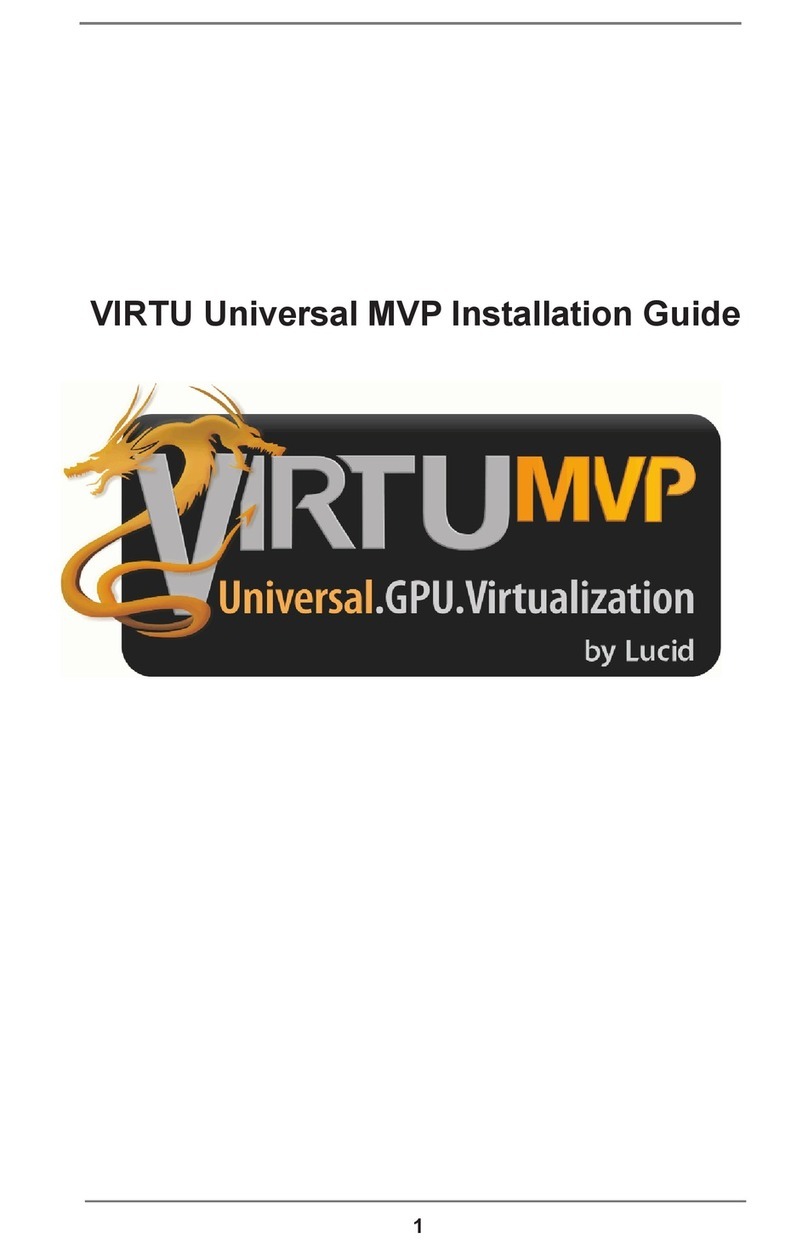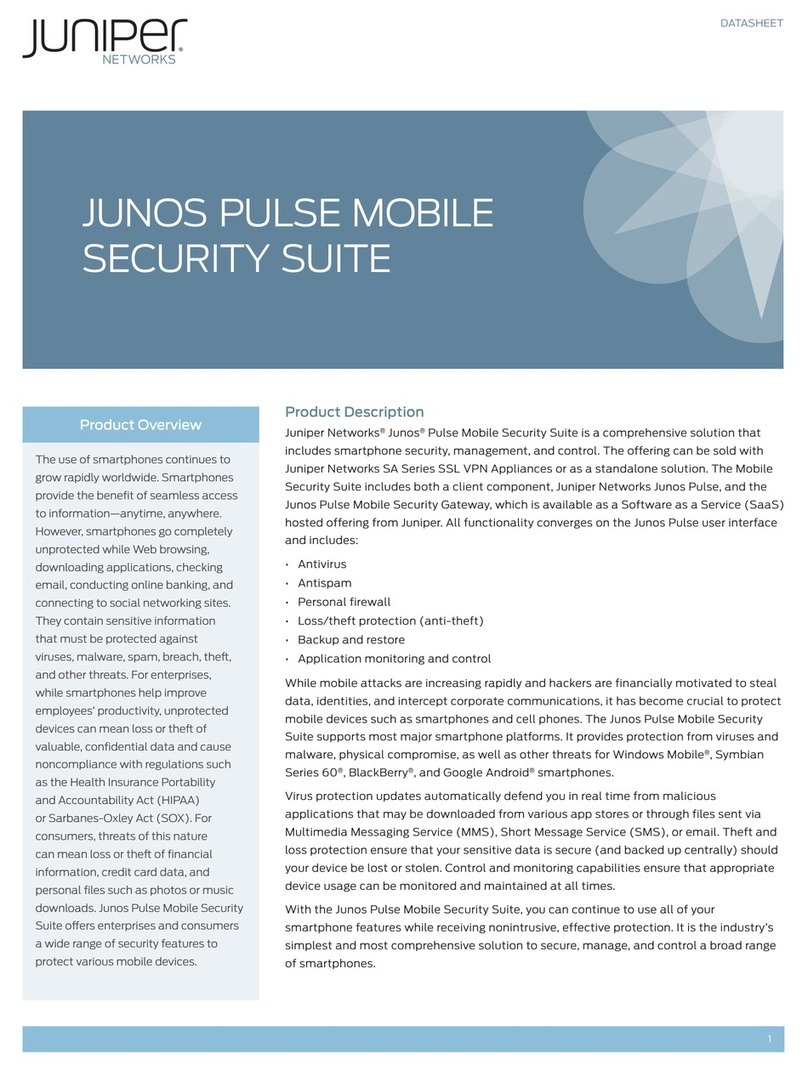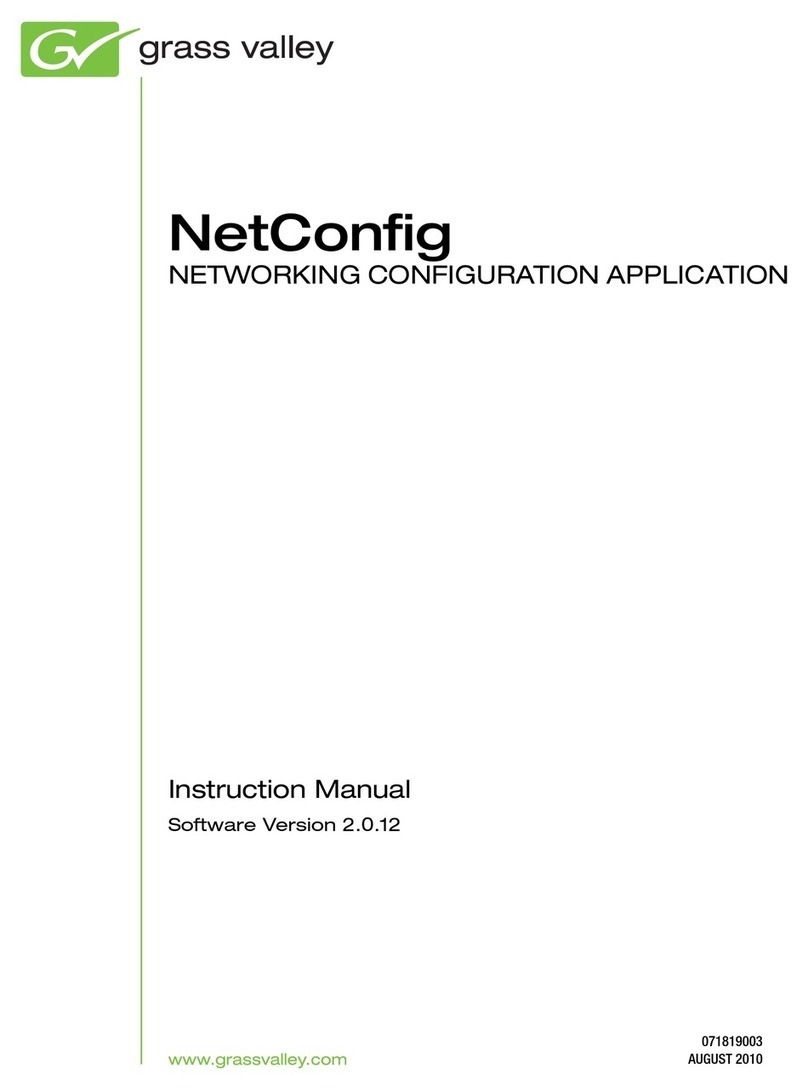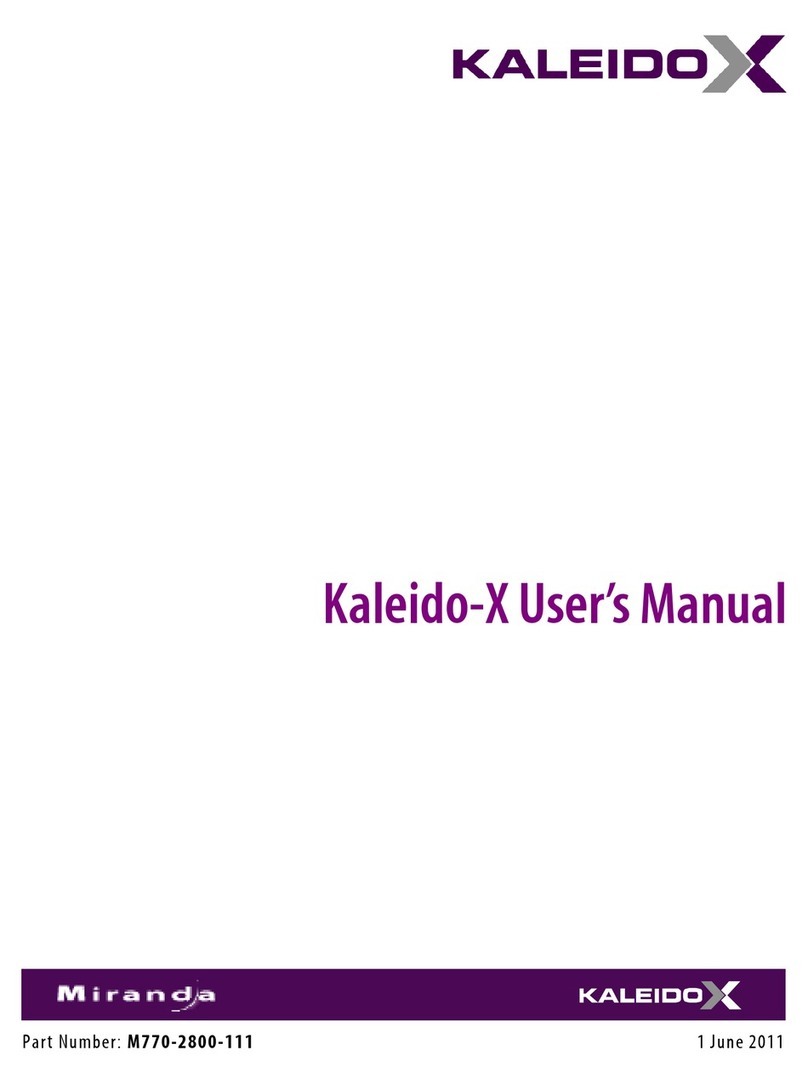
6
Release Notes
Bug Fixes
•[Ref. #KX-6467] Kaleido-X audio monitoring: Kaleido-X multiviewers equipped with KXO-
HDM modules may exhibit noise in the embedded audio signal, at the SDI monitoring
output.
•[Ref. #KX-6366] Kaleido-X SDI-output jitter: Kaleido-X multiviewers equipped with KXO-
HDM modules may exhibit jitter that does not meet the SMPTE-specified requirements,
at the SDI monitoring outputs, when the multiviewer is referenced to a black-burst 625
signal and configured for a 50Hz output format.
•[Ref. #KX-4640] KMV-3901/3911 time reference: In the case of a KMV-3901/3911
multiviewer, count down URS time code is not yet supported as a time code reference.
•[Ref. #KX-4837] KMV-3901/3911 time reference: Using a VITC 625 time code signal that
includes user bits with date information to reference a KMV-3901/3911 multiviewer
may result in clocks momentarily showing an incorrect time, or time code monitors
showing incorrect data, every now and then, on the monitor wall.
•[Ref. #KX-6401] KMV-3901/3911 vs. Quartz routers: In the case of a KMV-3901/3911
multiviewer with sources from a serial Quartz router configuration, after restarting the
multiviewer, UMDs may fail to show the expected source labels on the monitor wall.
Bug Fixed in Kaleido-X Version 6.61
•[Ref. #KX-6396] KMV-3901/3911 system logs: Since version 6.20 of the Kaleido-X
software, the KMV-3901/3911 may fail to rotate its log files, which could result in the
system becoming unstable and eventually locking up.
Bugs Fixed in Kaleido-X Version 6.60
•[Ref. #KX-4870] Kaleido-X16: Once you have applied a crosspoint change to route a
logical source from an external router to the KX Router destination 1 or 2, which are
mapped to the multiviewer's internal router outputs 1 and 2 by default, then, if your
replace the default mapping with monitor wall destinations, the earlier crosspoint may
still be unexpectedly applied again every time the multiviewer restarts.
•[Ref. #KX-4561] Kaleido-X, Kaleido-X16 audio probing: When monitoring AC-3 audio
channels 15 or 16, on a source’s embedded audio stream number 8, the detected audio
format may be reported as OTHER instead of AC-3.
•[Ref. #KX-4843] Kaleido-X16 vs. embedded audio: If Dolby E is available in an input
signal’s embedded audio streams number 1, 2, 3 or 4, then audio monitors associated
with streams number 5, 6, 7 or 8 may fail to reflect some of the channels’ actual level.
•[Ref. #KX-4959] Kaleido-X audio monitors: At power-up, or after resetting an input card,
some audio monitors may incorrectly report their source’s audio levels.
•[Ref. #KX-4917] Kaleido-X audio monitoring: At power-up, or after a Live Update, it may
happen that there is noise, or no sound at all, at the analog audio monitoring outputs.
•[Ref. #KX-3635] Global alarms: In the case of logical sources that are based on router
sources, the associated global alarm may be missing the expected text attributes from
contributing alarms, which results in UMDs or alarm status monitors showing no text
while correctly reporting a global alarm status on the monitor wall.
•[Ref. #KX-4904] Virtual alarm acknowledgment: Monitors configured to report a virtual
alarm, with latching enabled, may fail to respond to unlatch/acknowledge operations.
